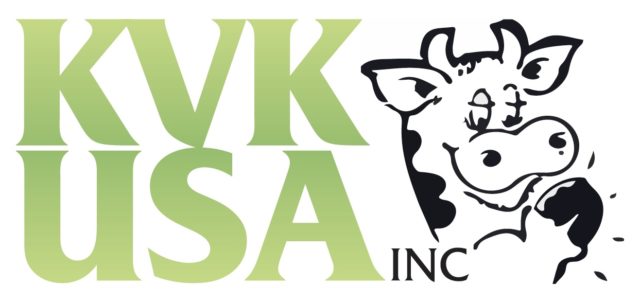Short of a “world economic event” or trade war, dairy farmers looking to manage milk income risks in 2017 may be best served by taking catastrophic coverage under the Margin Protection Program for Dairy (MPP-Dairy) and using other risk management options to protect higher margins, according to Alan Zepp, risk management program manager at Pennsylvania's Center for Dairy Excellence (CDE).
Zepp provided a dairy market update and discussed risk management options during his monthly “Protecting Your Profits” conference call, Nov. 16. The program, recorded and available on the Center for Dairy Excellence website, provides an update on the MPP-Dairy, Livestock Gross Margin-Dairy (LGM-Dairy) and puts and options on the Chicago Mercantile Exchange (CME) futures market.
Given current market conditions, he urged farmers to talk to their brokers or cooperatives to explore all available risk management tools. Current Class III futures prices average about $1.80 per cwt under the five-year average, but thanks to lower feed prices, margins are about $1.20 per cwt above the five-year average.
As always, conditions can change, and dairy producers have about a month to see how the milk price/feed cost margin outlook develops before they make 2017 MPP-Dairy coverage decisions. For those already enrolled, the deadline to select a coverage option is Dec. 16 at USDA Farm Service Agency offices.
MPP-Dairy
The September MPP-Dairy margin, the first half of the September-October pay period, was $9.48 per hundredweight (cwt). The October MPP-Dairy margin will be announced by USDA on Nov. 30.
Using University of Wisconsin-Madison Dairy Markets and Policy projections as of Nov. 11, Zepp estimated MPP-Dairy margins for upcoming pay periods at: September-October – $9.23 per cwt; November-December – $9.85 per cwt; January-February 2017 – $9.76 per cwt; March-April – $9.58 per cwt; May June – $9.51 per cwt; July-August – $9.83 per cwt; September-October – $10.38 per cwt; November-December – $10.57; and January-February 2018 – $10.27 per cwt.
Based on those preliminary estimates, there is only a 1 percent probability producers covered at the $7 per cwt level would see MPP-Dairy indemnity payments through next year.
“It would be hard for me to purchase (MPP-Dairy) buy-up coverage for 2017, because the average 2017 milk price would need to drop nearly $3 per cwt to get an MPP-Dairy payment at the $7 per cwt coverage level,” Zepp said. “If a farmer is uneasy about the direction of the new administration in Washington, MPP-Dairy coverage at $6.50 per cwt could provide some peace of mind.”
LGM-Dairy
For farms not enrolled in MPP-Dairy, LGM-Dairy could also provide inexpensive price protection under a simlar scenario. A reminder: By law, producers already enrolled in MPP-Dairy can’t participate in LGM-Dairy.
The Nov. 18-19 LGM-Dairy sales period offers 10-month milk income over feed cost margin coverage for January-October 2017, with policies available through certified crop insurance companies.
Based on conditions as of Nov. 16, the insurable 10-month LGM-Dairy margin averaged about $8.35 per cwt. The cost of a zero deductible LGM-Dairy policy was 60 cents per cwt, with a $1 deductible policy costing about 17 cents per cwt.
CME Class III put options
Given today’s futures market prices, simple put options or minimim price contracts through a farmer’s co-op might offer better protection for 2017.
As of Nov. 16, a March Class III CME $16 per cwt put option was trading at 64 cents per cwt, with a $15 put (similar to a $1 deductible LGM-Dairy policy) costing 26 cents per cwt.
Setting up a May 2017 “fence” contract – a $15 per cwt minimum and $17.50 per cwt maximum – could be done at low cost, but does carry a financial risk due to margin calls if prices move substantially higher. However, if prices fell to $14 per cwt, there would be payments.
Market fundamentals
Market fundamentals have not changed drastically since last month:
• The national dairy herd appears to have leveled off, but remains the largest since the 1990s.
• Based on Sept. 30 USDA estimates, domestic butter stocks remain high; cheese stocks are at an all-time high, but only 12 percent more than the three-year average.
• Class III futures prices average $16.31 per cwt for the next 12 months, $1.80 less than the five-year average but 50 cents more than a month ago.
• Chicago Mercantile Exchange (CME) cheddar blocks recently hit $1.94 per pound for the first time in two years
• Butter prices are moving higher globally relative to the U.S., making U.S. butter more attractive on export markets. Butter prices hit $2.17 per pound in Germany; $2.30 per pound on the latest Global Dairy Trade index; and around $2 per pound on the CME.
• International and U.S. milk powder prices are trading at least 20 percent below their three-year averages. U.S. nonfat dry milk prices are currently under Oceania and German average price when converted to U.S. dollars, making U.S. milk powder products competitive internationally, even with the strong dollar.
• Recent U.S. dairy export volumes have improved from the last 2-3 years, although lower prices have reduced export values.
• Among the top five global milk exporters, the only country/region producing more milk than a year ago is the U.S.
Find Zepp’s archived Protecting Your Profits podcast on the Center for Dairy Excellence website. Next month’s call is scheduled for Dec. 21. ![]()

-
Dave Natzke
- Editor
- Progressive Dairyman
- Email Dave Natzke





